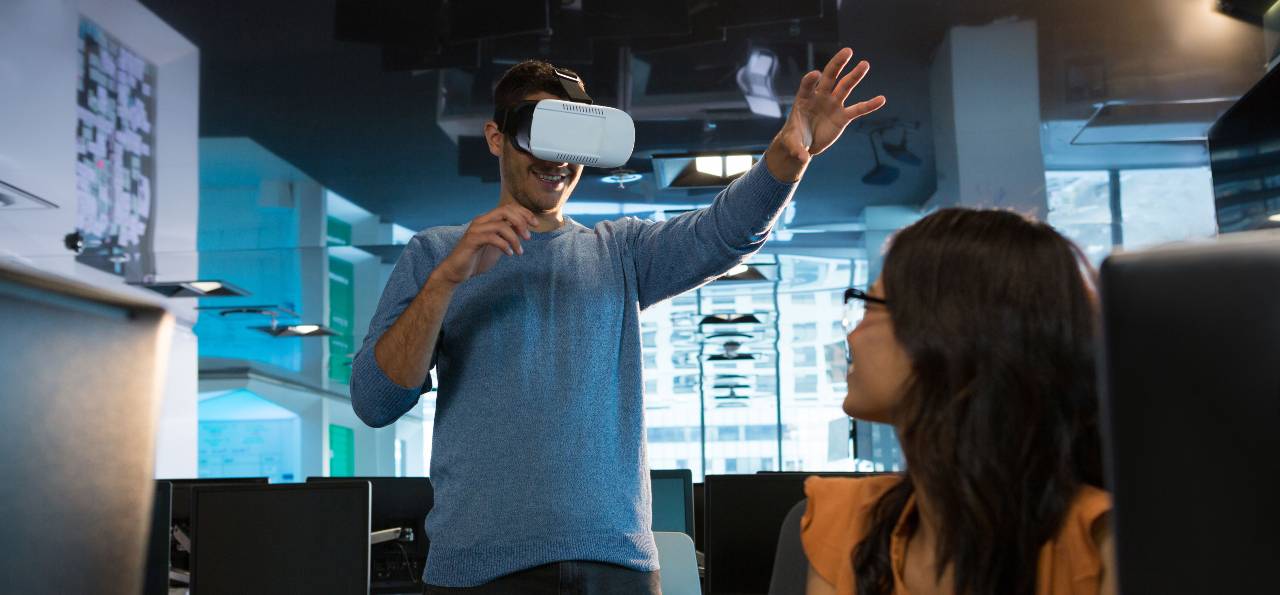The next exceptional education trend: virtual reality vs. augmented reality

Image Source: Bradley Hook | Pexels
The terms virtual reality (VR) and augmented reality (AR) get thrown around a lot. VR headsets, like the Oculus Quest or Valve Index, and AR apps and games, such as Pokemon Go, are still popular. VR and AR two different concepts, with characteristics that distinguish one from the other, but they look similar. And as these technologies develop, they naturally bleed into each other.
What is virtual reality?
VR headsets completely take over your vision to give you the impression that you’re somewhere else. The HTC Vive Cosmos, the PlayStation VR, the Oculus Quest, the Valve Index, and other headsets are opaque, blocking out your surroundings when you wear them. If you put them on when they’re turned off, you might think you’re blindfolded.
When the headsets turn on, however, the LCD or OLED panels inside are refracted by the lenses to fill your field of vision with whatever is being displayed. It can be a game, a 360-degree video, or just the virtual space of the platforms’ interfaces. You’re taken visually to wherever the headset wants you to go—the outside world is replaced with a virtual one.
What is augmented reality?
AR is one of the biggest technology trends, and it’s only going to get bigger as AR-ready smartphones and other devices become more accessible around the world. AR can make us see the real-life environment right in front of us—trees swaying in the park, dogs chasing balls, or kids playing soccer—with a digital augmentation overlaid on it. A pterodactyl might be seen landing in the trees, the dogs could be mingling with their cartoon counterparts, and the kids could be seen kicking past an alien spacecraft on their way to score a goal.
Considering the advances in AR technology, these examples are not that different from what might already be available for your smartphone. AR is readily available and being used in myriad ways, such as in Snapchat lenses, in apps that help you find your car in a crowded parking lot, and in a variety of shopping apps that let you try on clothes without even leaving home.
Maybe the most famous example of AR technology is the mobile app Pokemon Go, which was released in 2016 and quickly became an inescapable sensation. In the game, players locate and capture Pokemon characters that pop up in the real world—on your sidewalk or in a fountain.

Image Source: Authentic Images | Pikwizard
VR and AR in modern learning
The eLearning industry is all about making use of advanced technologies to enhance the learning experience. In the end, the aim is to make learning an easy, enjoyable task. Achieving that target without incorporating the latest technological tools is virtually impossible in the digital era.
Thus, augmented and virtual reality have slowly but surely been edging into the eLearning sector. These techniques have been warmly accepted by modern learners because of the many benefits they offer. If you are still unaware of these trending alternate reality technologies, then here are the five benefits of using them.
1. Make the eLearning process engaging and exciting.
Engaging online learners within the eLearning environment is one of the biggest hurdles eLearning professionals face. The use of augmented and virtual reality makes eLearning programs more innovative and enjoyable.
2. Create scenarios that otherwise are impossible to create.
Augmented and virtual reality technologies have added another dimension to the field of eLearning. They take online learners to another world and allow them to gain experience without any risk. This technology also enables organizations to incorporate environments that would be too costly to recreate in the real world.
3. Focus on a practical approach rather than theory.
The existing education system focuses more on theory than practical approach. That is the reason why people tend to forget rotely learned concepts so easily. On the contrary, augmented and virtual reality make learning a practical experience. And experiences are what stick with online learners and enable them to recall the information for later use. Some concepts that in theory appear to be dry fail to catch online learners’ attention for more than 15 minutes.
However, AR and VR can make them more interesting by adding practical application and immersion to eLearning. This also helps online learners to appreciate the importance of concepts and ideas instead of merely brushing them off as theoretical knowledge that has no correlation with their work duties or responsibilities).
4. Encourage online learners to learn from their mistakes.
Incorporation of alternate reality technologies into the learning environment removes any doubts from the minds of online learners. With these technologies, online learners are able to try out their own ideas and reach their own conclusions. This also ensures that the lesson learned sticks with them and creates an emotional connection.
5. Allow for self-guided exploration.
Augmented and virtual reality technologies can create a safe environment for online learners to experiment and try things that would otherwise be impossible.
The power of alternate reality technologies make eLearning more engaging and productive. As the technology evolves, so too will the applications in eLearning. That’s why it’s essential for eLearning pros to keep up with cutting-edge tech and think of new and innovative uses for modern applications.

